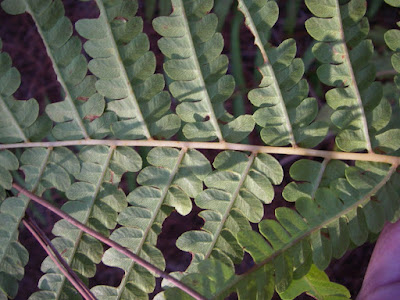
“Cinnamon Fern”
The cinnamon fern displays clustered leaves with pinnately compound fronds that taper towards their outermost tip. These fronds give O. cinnamomea a similar appearance to that of Woodwardia virginica (Wetland plant of the Week #23), however unlike the chain fern, the base of each cinnamon fern leaflet has a small tuft of orange hair that is visible when the undersides of the fronds are examined - pictured in the last image below.
The fern is not the source of the spice “cinnamon,” rather the cinnamon fern gets its common name from the rusty brown colored (i.e. cinnamon-colored) reproductive structures attached to the specialized (spore-bearing) fronds emerging from the center of the plant – pictured in the image below.

A rhizomatous fern, the roots of O. cinnamomea are highly fibrous, black in color and can grow to form a thickly woven mat as the plant matures. These wiry root masses are often harvested for use as planting substrates in horticulture, which is why the United States Agricultural Service lists the cinnamon fern as commercially exploited here in Florida and as vulnerable in New York State.






























Thanks for the info on why the plant is named cinnamon fern. Very interesting. http://tnnursery.net
ReplyDeleteNo problem, the cinnamon fern is an intersting plant. Didn't have time to add additional detail here, but recent genetic work has resulted in a new genus for the cinnimaon fern... And, the plant also has a fossil record going back more than 70-million years... Facinating stuff. Thanks for stopping by!
ReplyDelete